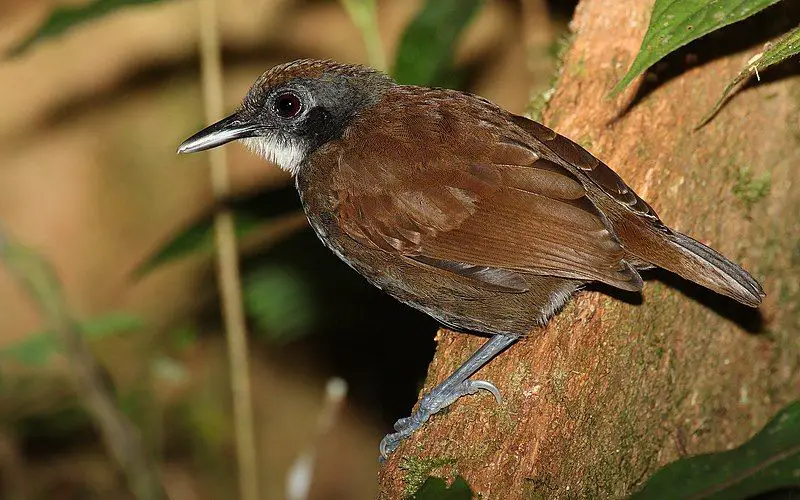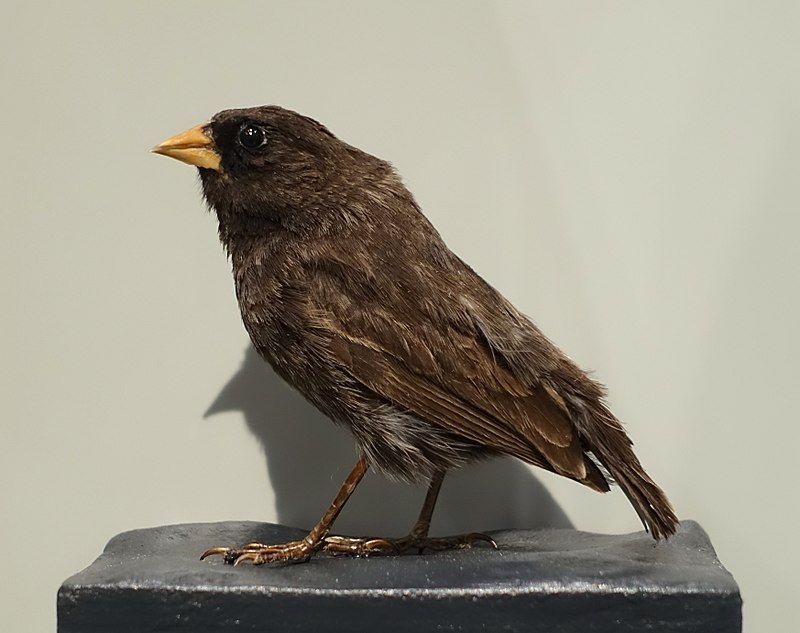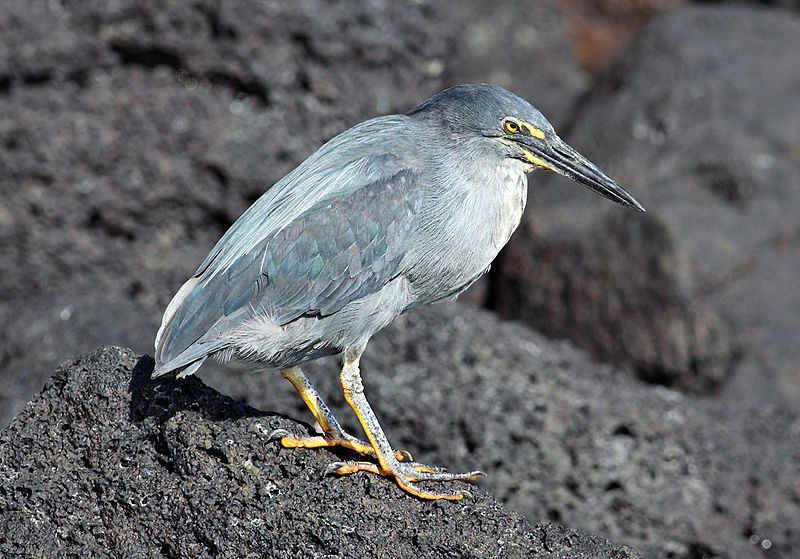Esmeraldas is a region in Ecuador renowned for its diverse bird population. It is home to hundreds of different species of birds, from the majestic and colorful macaws to the tiny hummingbirds that flit among the branches of the lush rainforest.
The forests of Esmeraldas also provide a haven for many rare and endangered birds, including the Harpy Eagle and the Giant Antpitta. With its unique climate and varied landscapes, Esmeraldas is an ornithologist’s paradise.
Here, bird watchers can observe and photograph various birds in their natural habitats. From the rainforests to the beaches, Esmeraldas has something to offer to everyone interested in birding.
10 Birds to Watch in Esmeraldas
If you are a bird lover, you might want to visit Esmeraldas, a region in Ecuador that boasts a rich diversity of avian species. Esmeraldas is home to hundreds of birds, from the colorful and majestic macaws to the tiny and elusive hummingbirds.
Here are ten birds that you should watch out for when you visit Esmeraldas.
1. Esmeraldas Woodstar
The Esmeralda’s woodstar is a rare hummingbird species in the Neotropical region. It belongs to the Trochilidae family, consisting of six different Woodstar genus species.
These hummingbirds are challenging to study due to their small size and similarity in appearance. Additionally, their rarity makes them hard to find, making it difficult to understand them better.
These factors make Esmeralda’s Woodstar one of the most mysterious hummingbirds in the world.
| Kingdom | Animalia |
| Phylum | Chordata |
| Class | Aves |
| Clade | Strisores |
| Order | Apodiformes |
| Family | Trochilidae |
| Genus | Chaetocercus |
| Species | C. berlepschi |
2. Lava Gull
The lava gull is a gull species found only in the Galapagos Islands. It is also known as the dusky gull and is a part of the “hooded gull” group, closely related to the Laughing gull and Franklin’s gull.
This species is considered the rarest gull in the world and is classified as a medium-sized gull. It has a dark, dusky coloring, with a white head and back. Its wings and tail are dark gray. The legs and beak are orange, and the eyes are yellow.
Its diet includes primarily insects, small fish, and crustaceans. The lava gull is endemic to the Galapagos Islands, meaning it is only found in this location and not anywhere else.
As a result, it is listed as a vulnerable species by the International Union for Conservation of Nature. Because of its rarity, it is essential to protect the lava gull and its habitat so that future generations can enjoy this rare species.
| Kingdom | Animalia |
| Phylum | Chordata |
| Class | Aves |
| Order | Charadriiformes |
| Family | Laridae |
| Genus | Leucophaeus |
| Species | L. fuliginosus |
3. Pale-browed Tinamou
The pale-browed tinamou is a species of ground-dwelling bird native to South America. It is a member of the Tinamidae family, which contains several other South American species. This particular species can be found in tropical dry forests in Peru and Ecuador.
It is a small bird, typically measuring between 24 and 28 centimeters in length. Its wings are relatively short, and its tail is long and rounded. The pale-browed tinamou is mainly a dull gray-brown color, with a pale brown forehead and a white throat.
It also has a black band on the top of its head and a black band on its chest. The pale-browed tinamou is an omnivorous species, feeding on plants and small invertebrates. Its diet consists of fruits, seeds, leaves, and insects.
It is usually found on the ground, searching for food in the leaf litter and undergrowth. It is primarily a solitary species, though it sometimes forms flocks of up to 20 individuals.
It is also a shy species; if disturbed, it will usually run away instead of flying. The pale-browed tinamou is a threatened species due to habitat destruction and hunting.
Its population is decreasing in some areas and is listed as near threatened on the IUCN Red List of Threatened Species. Conservation efforts are being made to protect this species and its habitat, including establishing protected areas in Peru and Ecuador.
| Kingdom | Animalia |
| Phylum | Chordata |
| Class | Aves |
| Order | Tinamiformes |
| Family | Tinamidae |
| Genus | Crypturellus |
| Species | C. transfasciatus |
4. White-tailed Jay
The white-tailed jay is a species of bird that belongs to the family Corvidae. It is native to Ecuador and Peru and can be found in subtropical or tropical dry forests as well as subtropical or tropical moist lowland forests.
Unlike other species of birds, there is no visible sexual dimorphism in the white-tailed jay; this means that there is no physical difference between males and females of the species.
The white-tailed jay is an omnivorous bird, feeding on various insects, small rodents, fruit, and other plant matter. Its plumage combines white, grey, brown, and black feathers, and its tail is marked with white feathers along the edges.
This species plays a vital role in its natural habitat, helping to disperse seeds and control insect populations.
| Kingdom | Animalia |
| Phylum | Chordata |
| Class | Aves |
| Order | Passeriformes |
| Family | Corvidae |
| Genus | Cyanocorax |
| Species | C. mystacalis |
5. Golden-crowned Tanager
The Golden-Crowned Tanager is a beautiful, tiny bird species native to South America. It can be found in Colombia, Ecuador, Peru, and Venezuela, where it inhabits subtropical and tropical moist montane forests.
This bird is a part of the Thraupidae family, which contains more than 400 species of birds. It is characterized by its golden-colored crown, a bright yellow-orange patch on its head, and a black mask around its eyes.
Its body is primarily yellow-green, with a few black feathers scattered throughout. The Golden-Crowned Tanager can usually be spotted in the treetops of humid, rainforest-like habitats.
It typically feeds on insects, such as beetles and caterpillars, as well as small fruits and berries.
It is a social bird, often found in small flocks, and will even cooperate with other species of birds, such as hummingbirds and woodcreepers, to find food.
The Golden-Crowned Tanager is a beautiful bird species that adds a splash of color to the forests of South America.
Its bright colors and relatively large population make it an essential part of the region’s ecosystem.
| Kingdom | Animalia |
| Phylum | Chordata |
| Class | Aves |
| Order | Passeriformes |
| Family | Thraupidae |
| Genus | Iridosornis |
| Species | I. rufivertex |
6. Thamnophilidae

The antbirds are a large passerine bird family, Thamnophilidae, found across Central and South America from Mexico to Argentina. These birds, also known as antshrikes, antwrens, antvireos, fire-eyes, bare-eyes, and bushbirds, have over 230 species.
Antbirds are small to medium-sized birds that live in various habitats such as woodlands, dry forests, savannas, mangroves, and arid scrubs. These birds feed primarily on insects and other invertebrates, and some species also eat fruits and seeds.
The antbirds have short wings and long legs and often have a loud, melodic song. They are usually seen in pairs or small groups, though some species are solitary. Antbirds are active during the day and use their long, curved bills to search for food.
They also have a unique behavior of flicking their wings and tail while foraging, which is thought to flush out prey. Antbirds are essential to their ecosystems, as they help keep insect populations in balance and provide food for larger predators.
| Kingdom | Animalia |
| Phylum | Chordata |
| Class | Aves |
| Order | Passeriformes |
| Family | Thamnophilidae |
7. Flightless Cormorant
The flightless cormorant is a unique bird species found only in the Galapagos Islands. It is a type of cormorant, an aquatic bird usually swimming in the sea and catching fish with its long beak.
However, the flightless cormorant has a very distinct feature – it is the only known species of cormorant that has lost the ability to fly.
This makes it a remarkable example of the highly unusual fauna found in the Galapagos Islands. The flightless cormorant is well adapted to its environment and can move around the islands without needing flight.
Its wings have become smaller and more rounded, reducing its flying ability. This adaptation has also allowed the bird to become more agile and use its wings to help it swim faster and more efficiently.
In addition, the loss of flight has enabled the cormorant to focus its energy on other activities, such as fishing, which it does more efficiently than other cormorant species. The flightless cormorant is a remarkable example of evolution at work.
It has adapted to its environment incredibly efficiently, enabling it to survive and thrive in the unique environment of the Galapagos Islands. The ongoing conservation efforts for the species have been successful, and its numbers are steadily increasing.
It is a testament to the power of evolution and natural selection and the importance of preserving the unique wildlife of the Galapagos Islands.
| Kingdom | Animalia |
| Phylum | Chordata |
| Class | Aves |
| Order | Suliformes |
| Family | Phalacrocoracidae |
| Genus | Nannopterum |
| Species | N. harrisi |
8. Sharp-beaked Ground Finch

The sharp-beaked ground finch is a bird species within Darwin’s finch group of the tanager family, Thraupidae. This species is native to the Galápagos Islands in Ecuador and is classified as a least-concern species by the International Union for Conservation of Nature.
This classification is given because the species is not facing any imminent risk of extinction. The sharp-beaked ground finch is a small bird measuring 4-6 inches in length.
Its plumage is generally grey, with white or yellow on the underparts, and its bill is a dark, pointed one. The sharp-beaked ground finch prefers to live in open grassland, feeding mainly on seeds.
They are social creatures often seen in small groups, foraging for food. The Galápagos Islands are an essential habitat for the sharp-beaked ground finch, as it is the only place in the world where this species can be found.
The Galápagos Islands are home to many other species of birds, as well as many other unique species of plants and animals, and it is essential to ensure that the environment is kept well-protected.
The International Union for Conservation of Nature is actively working to ensure that the Galápagos Islands remain a safe and protected habitat for these species.
In conclusion, the sharp-beaked ground finch is a species of bird native to the Galápagos Islands in Ecuador and is classified as a least-concern species by the International Union for Conservation of Nature.
It is an important species to the Galápagos Islands, and its conservation is essential in preserving the islands’ unique biodiversity.
| Kingdom | Animalia |
| Phylum | Chordata |
| Class | Aves |
| Order | Passeriformes |
| Family | Thraupidae |
| Genus | Geospiza |
| Species | G. difficilis |
9. Lava Heron

The lava heron, also known as the Galápagos heron, is a species of heron found only in the Galápagos Islands of Ecuador. This heron species is a medium-sized bird reaching up to 50 cm long. It has a long, thin neck and a long, curved bill.
Its plumage is predominantly gray, with black and white streaks throughout. It also has a prominent white brow line and a black patch near its neck. The lava heron is usually found near lava fields and coastal areas of the Galápagos Islands.
It feeds mainly on small fish, invertebrates, and occasionally lizards. It is a solitary bird and is rarely seen in pairs.
It is more likely to be seen near water sources during the breeding season. The lava heron is classified as vulnerable by the IUCN due to its limited range and potential threats from introduced predators, such as cats and rats.
It is also threatened by habitat destruction, as lava fields are often converted into agricultural land or development. Conservation efforts have been put in place to protect the heron, such as creating protected areas and removing invasive species.
The lava heron is an essential species endemic to the Galápagos Islands of Ecuador. It is a solitary bird that feeds mainly on small fish and invertebrates.
Due to potential threats from introduced predators and habitat destruction, it is classified as vulnerable by the IUCN, and conservation efforts have been put in place to protect it.
| Kingdom | Animalia |
| Phylum | Chordata |
| Class | Aves |
| Order | Pelecaniformes |
| Family | Ardeidae |
| Genus | Butorides |
| Species | B. sundevalli |
10. Black-breasted Puffleg
The black-breasted puffleg is a unique species of hummingbird native to Ecuador. Sadly, this species faces a dire and concerning reality – it is considered Critically Endangered and is on the brink of extinction.
The population of this species is now estimated to be no more than 250 individuals remaining in their native habitat, which is a minimal number.
This hummingbird species is threatened by various factors, such as the destruction of its habitat due to deforestation, the use of pesticides in nearby agricultural areas, and predators in its range.
Unfortunately, these threats have caused the population to decline rapidly in recent years, and it is feared that without urgent conservation efforts, this species could soon become extinct.
To help preserve the black-breasted puffleg, conservationists and other stakeholders must come together to develop a plan of action.
This plan should include measures such as habitat protection, implementing more sustainable agricultural practices, and creating predator-free areas.
It is also essential that a captive breeding program be established to help increase the population of this species in the wild. The black-breasted puffleg is a unique species that deserves our attention and protection.
Without immediate and effective conservation measures, this species could be lost forever. Therefore, we must take steps to ensure the survival of this species and preserve it for future generations.
| Kingdom | Animalia |
| Phylum | Chordata |
| Class | Aves |
| Clade | Strisores |
| Order | Apodiformes |
| Family | Trochilidae |
| Genus | Eriocnemis |
| Species | E. nigrivestis |
Conclusion
Birds in Esmeraldas are an essential part of the local ecology and culture. They provide a vital link between people and nature, providing food, entertainment, and spiritual connection for the region’s people.
The birds of Esmeraldas are a diverse and varied group, with many species of birds being found in the area.
As the conservation and protection of these birds are essential to the health of the local ecosystems, it is vital to maintain their habitat and resources.